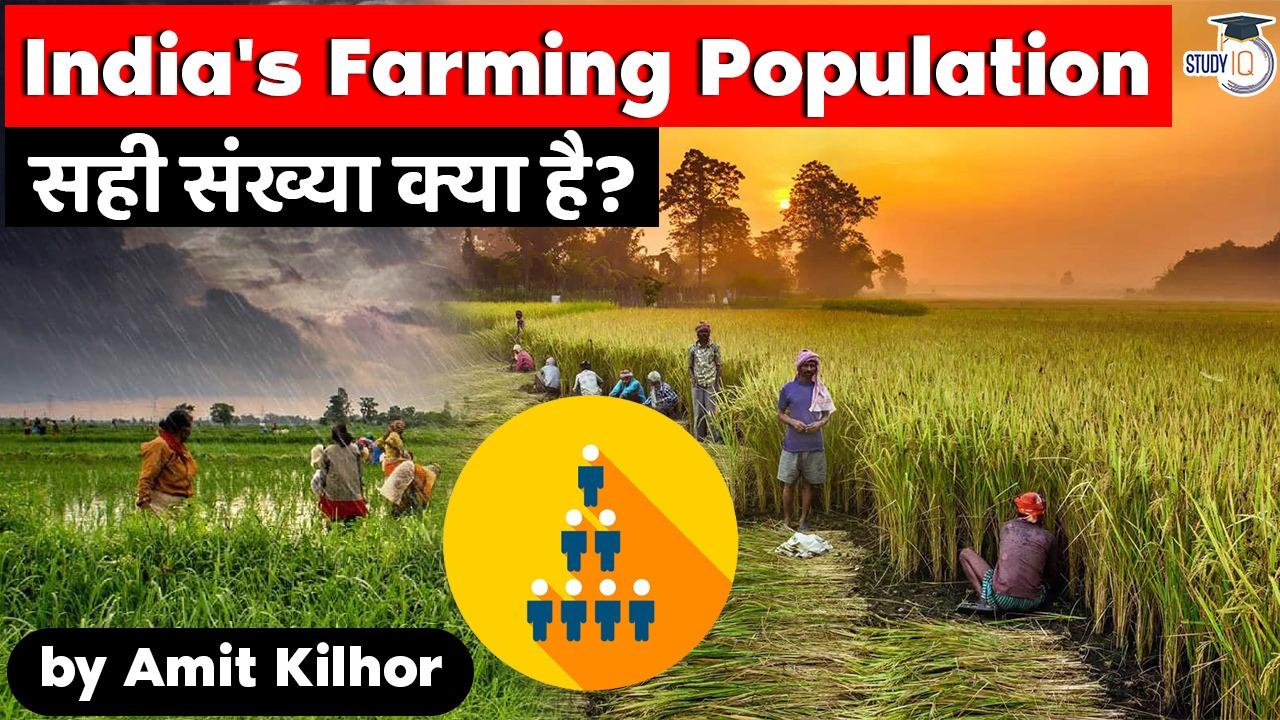Table of Contents
How many farmers in India?
- Depending on the source, there is a wide variation in the number of farmers in India.
- What is the extent of variation?
- The last Agriculture Census for 2015-16 placed the total “operational holdings” in India at 146.45 million.
- The Pradhan Mantri-Kisan Samman Nidhi (PM-Kisan) scheme has 110.94 million beneficiaries.
- National Statistical Office’s Situation Assessment of Agricultural Households (SAAH) report for 2018-19 pegs the country’s “agricultural households” at 93.09 million.

- This wide variation has largely to do with methodology.
- The Agriculture Census looks at any land used even partly for agricultural production and operated/managed by one person alone or with others.
- The land does not have to be owned by that person (“cultivator”), who needn’t also belong to an “agricultural household”.

- The SAAH report, on the other hand, considers only the operational holdings of agricultural households. Members of a household may farm different lands. While the Census treats each of them as separate holdings, the SAAH takes all these lands as a single production unit. It does not count multiple holdings if operated by individuals living together and sharing a common kitchen.
- Accounting for only “agricultural households”, while not distinguishing multiple operating holdings within them, brings down India’s official farmer numbers to just over 93 million.
- Expansive definition: SAAH’s definition of “agricultural households” is expansive.
- It covers households having at least one member self-employed in agriculture and whose annual value of produce exceeds Rs 4,000.
- Such self-employment needs to be for only 30 days or more during the survey reference period of six months.
So, what is the actual number of farmers?
- The estimate of actual number is based on the following methodology.
- The SAAH report gives data on agricultural household income from farm and non-farm sources, both state-wise and across different land-possessed/operational holding size classes.
- From the above data, we can categorise “full-time/regular” farmers as those households whose net receipts from farming are at least 50 per cent of their total income from all sources.
- The SAAH report also has state-wise estimates of agricultural households for each land-possessed size class.
- By taking only those size classes in which the dependence ratios are higher than (or close to) 50 per cent, and adding up the corresponding estimated number of agricultural households, we are able to arrive at the total “full-time/regular” farmers for each state.

- Following the above methodology, India’s “serious” farmer population, in turn, adds up to 36.1 million, which is hardly 39 per cent of the SAAH estimate.
Policy implications of having actual numbers of farmers significantly lower than estimated
- If the actual number of farmers deriving a significant share of their income from agriculture per se is only 40 million a host of policy implications follow.
- Targeted policy: One must recognise that farming is a specialised profession like any other.
- “Agriculture policy” should, then, target those who can and genuinely depend on farming as a means of livelihood.
- Minimum support prices, government procurement, agricultural market reforms, fertiliser and other input subsidies, Kisan Credit Card loans, crop insurance or export-import policy on farm commodities will matter mainly to “full-time/regular” farmers.
- Land size matters: The SAAH report reveals that the 50 per cent farm income dependence threshold is crossed at an all-India level only when the holding size exceeds one hectare or 2.5 acres.
- This is clearly the minimum land required for farming to be viable, which about 70 per cent of agricultural households in the country do not possess.
- Policy for labourers: What should be done for this 70 per cent, who are effectively labourers and not farmers?
- Their problems cannot be addressed through “agriculture policy”.
- The scope for value-addition and employment can be more outside than on the farm — be it in aggregation, grading, packaging, transporting, processing, warehousing and retailing of produce or supply of inputs and services to farmers.
Latest Burning Issues | Free PDF






















 WhatsApp
WhatsApp